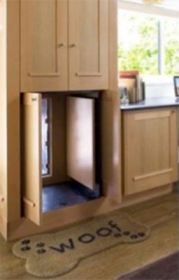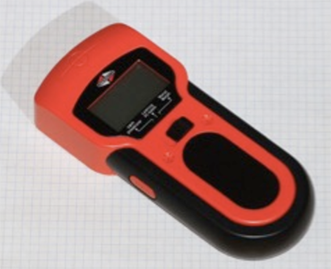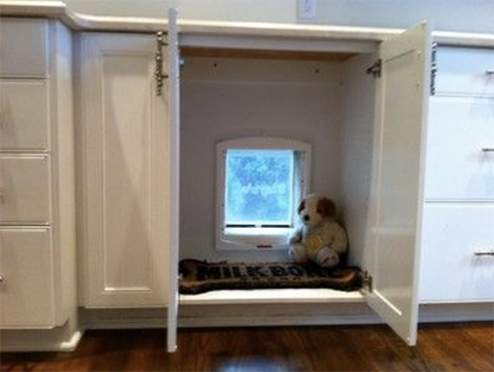How to Build a Hidden Cabinet Doggy Door
Doggy doors are such a great way to allow your dog ample time outside. No one likes opening and closing the back door every 5 minutes for their dog. But doggy doors are definitely not the most aesthetic. They love to explore the outdoors. What better way to encourage their adventurous spirit than a convenient cabinet doggy door?
You want me to cut a hole in the back of my kitchen cabinets for the dog??
Okay, it may seem strange at first glance. Hear us out. There are actually a few reasons why base cabinets are the best place to install your doggy door:
- It’s a creative and cool way to hide your doggy door without detracting from your home’s decor.
- You can easily close it or lock it to keep your dogs safe and happy.
- The cabinet provides a little extra insulation during the summer and winter. Have you ever walked by your doggy door on a cold winter morning? No thanks.
- It’s like the wardrobe to Narnia, butfor dogs.
With benefits like these, the appeal for an easy access doggy door is plain to see. Read on to check out how you can provide your furry companion a cabinet doggy door in your own home.
How to Build a Cabinet Doggy Door
Obtaining a Pet Door
Safely Cutting a Doorway through your Cabinet and Wall
The inside of the doorway you created must also have internal side-walls to keep your dog from moving around behind the walls of your house. Some doggy door models are wide enough to accommodate this blockage, but if yours isn’t, you’ll need to craft and install side-barriers within your doorway. Remember: You should check to ensure there are no studs, pipes, or hazardous wires behind the cabinet and wall you intend to operate on. Use a stud-finder to check for studs in the wall, and contact your local building inspector to learn if there are any obstructions around your cabinet. Otherwise, if you accidentally encounter obstacles like studs when cutting into your wall, you’ll end up needing to repair the hole and create a new one—adding a lot of unnecessary labor to your day.
Installing your Doggy Door
The doggy door you’ve purchased should come with instructions, but just in case they didn’t, or you built your own doggy door from scratch, here’s a quick guide on your doggy door installation.
 MADE IN THE USA
MADE IN THE USA






